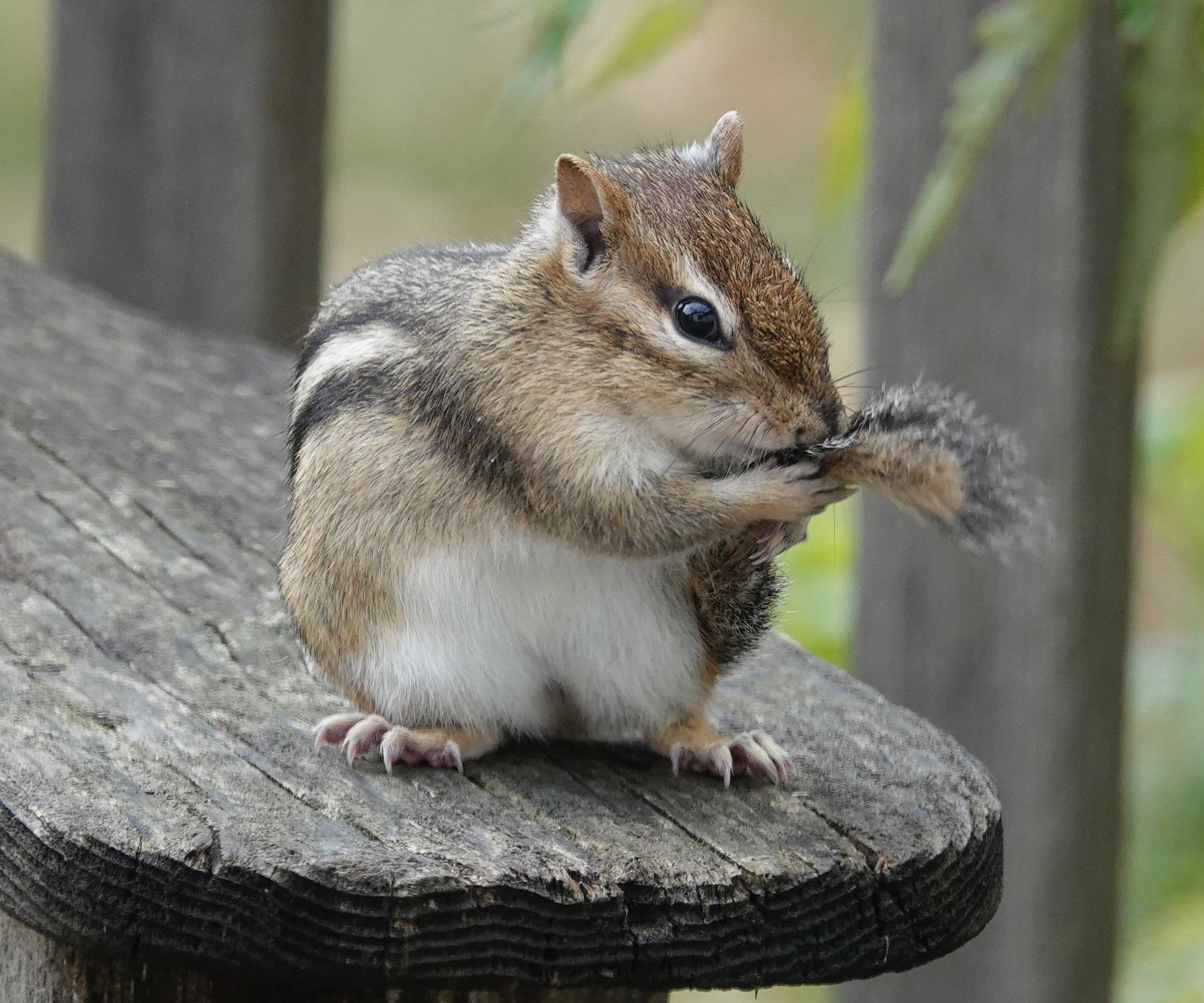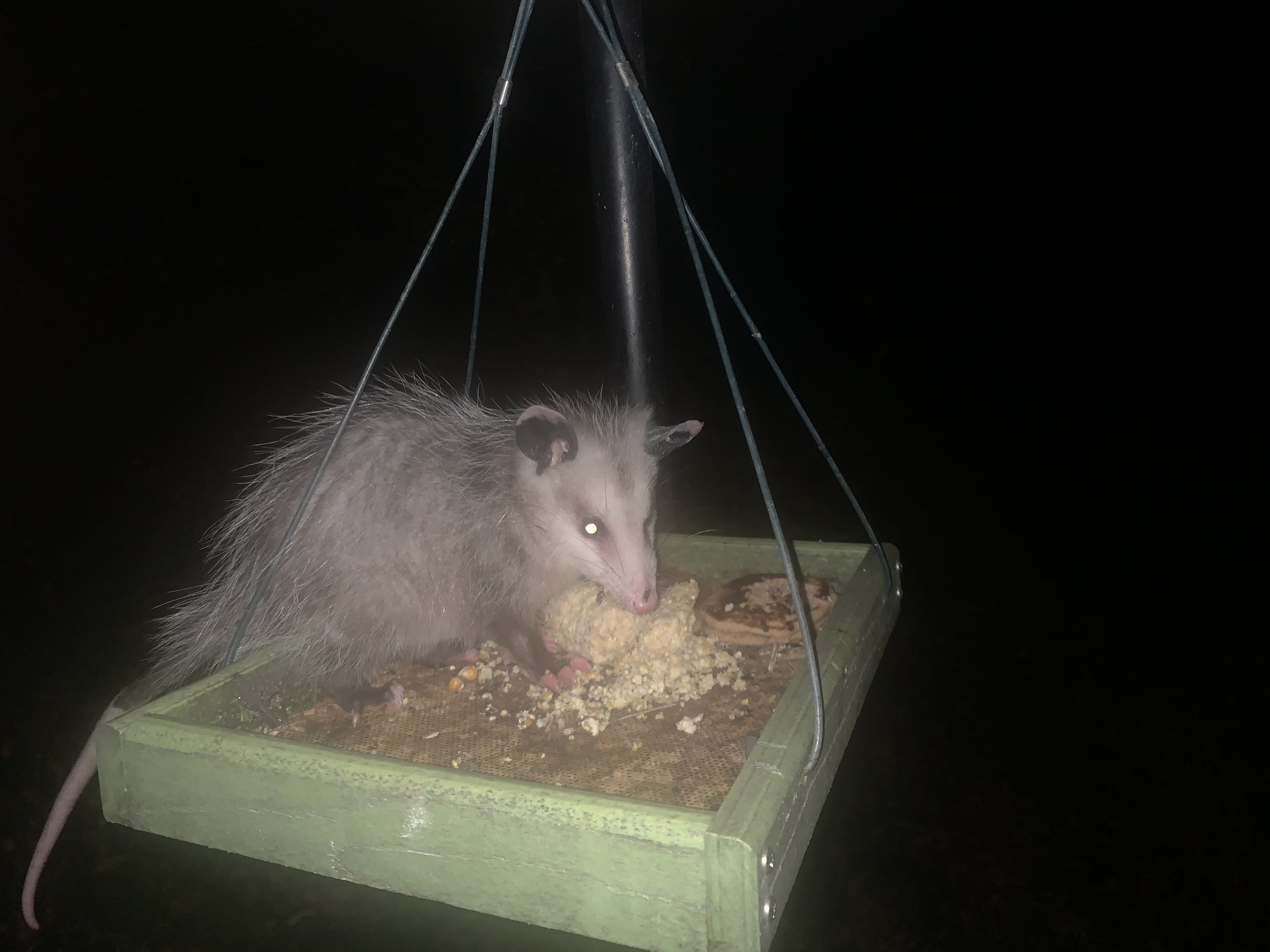Naturally
I wanted to applaud the lovely combination but I was driving. I watched a long, twisting line of blackbirds flying past a double rainbow on my way home from a church where I’d done readings and led prayers at a funeral. The deceased’s wife hugged me and said she and her husband had been arguing over the identification of a woodpecker and a finch—red-headed or red-bellied, house or purple. “We each said, if Al was here, he’d know.” She paused before adding, “Thank you for being here today.”
Ruby-throated hummingbirds don’t travel in flocks during migration. Each bird follows its instincts as to departure dates and routes.
A skunk smelled as if it wanted to be left alone. Multi-colored Asian lady beetles and minute pirate bugs sampled Al Batt. They are biting beetles and bugs, but I’ve not been stung by a wasp. Yellowjackets are hangry at this time of the year. This summer, they were well-behaved pollinators and beneficial predators. I like boxelder bugs. They’re beautiful and they don’t bite.
The Lower Rio Grande Valley
I stayed in a camper in Mission, Texas, where a common sound was “Kis-ka DEE! Kis-ka-DEE!” The great kiskadee, a feisty, striking-colored flycatcher, shouted its name. Named for its loud "kis-ka-dee" call, it aggressively protects its nesting territory. One of its most feared predators is the coral snake and the kiskadee stays away from anything with the same color pattern as the coral snake. Several harmless snakes are similarly marked, but never with the red and yellow touching. Coral snakes are found in the southeastern half of Texas in woodlands, canyons and coastal plains. The rhyme of caution is “Red touches black, venom lack. Red touches yellow, kill a fellow.”
The Old Farmer’s Almanac
Snowfall will be above normal, so we’ll need to keep a shovel at the ready early, because snow will arrive beginning in November with storms, showers and flurries continuing through the start of spring. Along with above-normal snow, we’ll see normal to colder-than-normal temperatures. To sum it up in four words: cold, snowy and normal.
Q&A
“When goats are brought in to browse vegetation from a park, do the buckthorn seeds they eat still germinate?” University of Minnesota research published in The Natural Areas Journal found that 2% of buckthorn seeds passed through goat guts intact and of the seeds that appeared in the goats’ feces, 11% were viable. For comparison, 63% of seeds not eaten by goats were capable of germination.
“How do I tell if it’s Virginia creeper or woodbine?” Virginia creeper has aerial roots and hairy leaf stalks and stems. Woodbine lacks aerial roots and has hairless stalks and stems.
“When do pelicans migrate?” American white pelicans migrate to the Gulf of Mexico with October and November being the peak migration months. In “A Sand County Almanac,” Aldo Leopold described migrating pelicans this way: “Let a squadron of southbound pelicans but feel a lift of prairie breeze… and they sense at once that here is a landing in the geological past, a refuge from that most relentless of aggressors, the future. With queer antediluvian grunts they set wing, descending in majestic spirals to the welcoming wastes of a bygone age.”
“What is the world’s most dangerous bird?” The cassowary, although ostriches and emus can be dangerous. The cassowary is a flightless bird native to Australia and New Guinea and has killed humans with slashing blows of its feet, which have long dagger-like toenails. It will surprise few people to learn that a pet cassowary killed a man in Florida.
Darwyn Olson of Hartland asked where multi-colored Asian lady beetles lay their eggs. They’re laid on the undersides of leaves of low-growing ornamentals, trees, roses, wheat, tobacco, soybeans and other plants. Common buckthorn is a woody shrub or small tree and is the overwintering host plant of the soybean aphid, which lays eggs on buckthorn in the fall. The eggs overwinter and hatch in the spring.
“How do I register a large tree?” Minnesota's Big Tree Registry covers 53 native tree species. You’ll find the application here: https://www.dnr.state.mn.us/trees_shrubs/bigtree/nominate.html
“What is the electric light bug?” It’s a nickname for the 2-3-inch-long giant water bug that’s attracted to stadium lights.
Thanks for stopping by
“Oh, a wondrous bird is the pelican! His bill holds more than his belican. He can take in his beak enough food for a week. But I’m darned if I know how the helican.”–Dixon Lanier Merritt.
“Here is your country. Cherish these natural wonders, cherish the natural resources, cherish the history and romance as a sacred heritage, for your children and your children’s children. Do not let selfish men or greedy interests skin your country of its beauty, its riches or its romance.--Theodore Roosevelt.
Do good.
©️Al Batt 2023
The sequence of hues commonly described as making up a rainbow are red, orange, yellow, green, blue, indigo and violet. A mnemonic used for remembering this color sequence is the name Roy G. Biv. When the light is reflected twice in a drop, a double rainbow appears. The secondary rainbow is lighter in color than the primary and has the colors reversed. Double rainbows are often seen as symbols of good luck and happiness. I hope seeing this photo brings you both. Crummy photo by Al Batt.
A chipmunk not only chased its tail, it caught it.
A Great Egret and a Painted Turtle look at the world.
Eyeshine is the mirror-like reflection of the light from the eyes of opossums and many other animals.





